(To see the video, click on the play button above)
Acrylic paint equipment maintenance is something you shouldn’t neglect. This will keep your equipment in good condition over time.
In this article and video, I explain how I clean my equipment properly.
Why do you need to clean your brushes properly?
Acrylic paint dries extremely quickly, which is why you need to act quickly and clean your brushes and spalters thoroughly. Otherwise, dry paint can permanently damage your equipment, making them very difficult to recover.
Best practices when creating a table
To prevent the paint from drying in the bristles of your brushes while you’re creating your painting, I recommend that you soak your brushes and spalters in water.
Once you’ve used your brush, put it in a glass or other container with lukewarm water for several reasons:
- Water prevents paint from drying in brush fibers/hairs
- This starts the brush cleaning process
Cleaning up after your painting
Don’t make the mistake of leaving your equipment behind and forgetting about it once your painting is finished. You’re going to say to me: “You’d have to do it on purpose!”, but believe me this happens much more often than you’d think because all your attention is captured by the beautiful painting you’ve just created!
Washing equipment without products
You can clean your brushes with water without using any products. Here’s how to do it:
- Run a small filament of lukewarm water from your tap
- Position your brush under the faucet and let the water run over the bristles/fibers.
- Use your thumb and forefinger to rub the bristles and remove acrylic paint residue.
- Let your brush dry
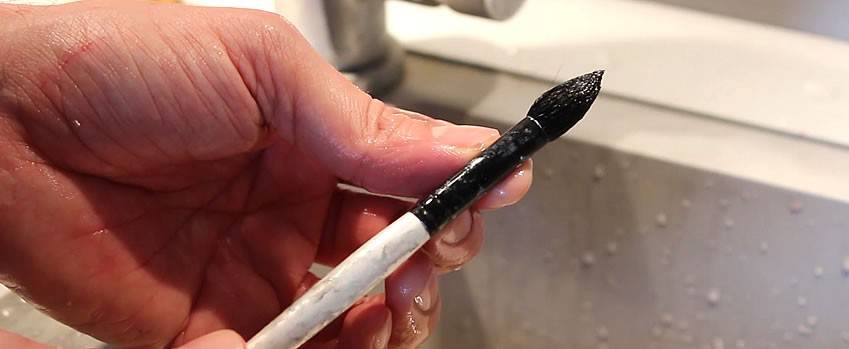
Cleaning equipment with products
Cleaning with ordinary products
You can use soap or washing-up liquid for cleaning. Here’s how I do it:
- Put a little product in the middle of your hand
- Rub the brush into your hand to apply the product evenly.
- Run a light filament of lukewarm water from your tap
- Position your brush under the faucet and let the water run over the bristles/fibers while continuing to rub with your hand.
- Use your thumb and forefinger to rub the bristles and remove acrylic paint residue.
- Let your brush dry
Cleaning with dedicated products
You can use dedicated acrylic paint cleaners. Their role is to focus the action on detaching acrylic paint from your supports, bristles, fibers, etc.
I tested two products for you:
Pébéo liquid Marseille soap for artists
Pébéo has created an olive oil version of Marseille soap for painters. The results are satisfactory and I’ve managed to clean my spalter properly and my hands too!
For use, it’s exactly the same as in the previous section.
To find out more about this product, please click here

Soap from “The Masters
To make it easier to clean even the most stubborn brushes, I recommend you use this world-famous product that has been in use for a very long time: soap from “The Masters” brand.
This product is very simple to use: just rub your brush directly onto the soap using small movements, then clean your brush under water as in the previous steps.
Click here to find out more and/or buy material via the Internet
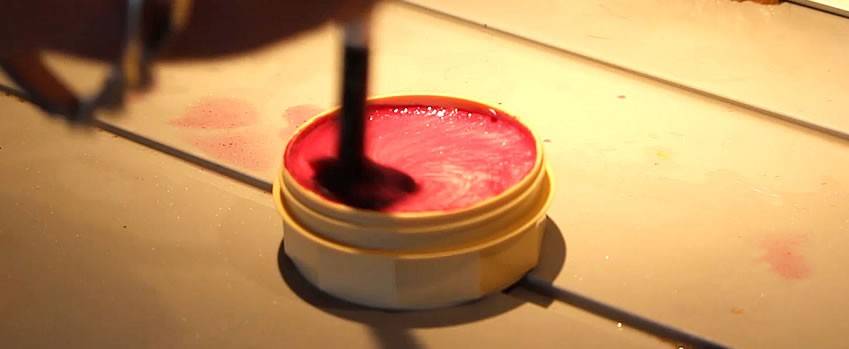
Knife cleaning
Knives are different. You should always have rags / scraps of fabric around you when creating a painting with a painting knife. After stabbing, I recommend wiping your knife immediately before the paint dries.
This will also allow you to clean your knife immediately without having to use water or other products.
To see which knives are suitable for acrylic paint, I recommend this article.
Tips for recovering your painting knives
If, however, you find yourself with knives full of dried paint, here’s a technique I use that works very well:
Fill a container with half hot water and half white vinegar, add a little baking soda and leave to soak for 24 hours. This will enable dry acrylic paint to be easily removed from the knives.
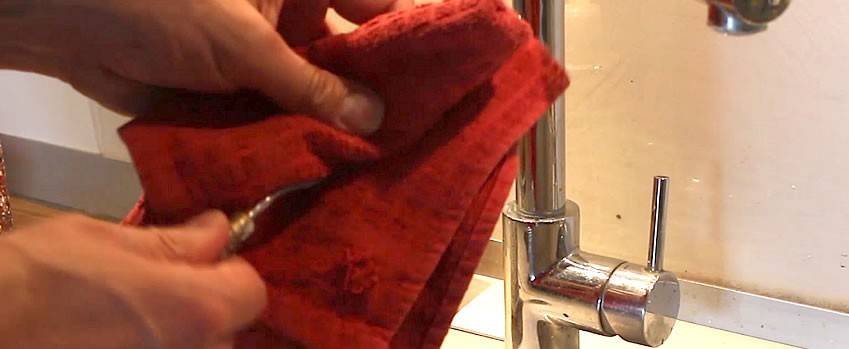
Drying brushes and spalters
For drying, there’s also a way to do it.
Many of us are making the same mistake, and in the end it’s quite logical. Let me explain:
Once a brush has been cleaned and washed, we tend to put it straight back into the pot, bristles up. And that’s a big mistake.
In fact, you should place your brushes and spalters with their heads downwards.
Why? It’s simple: this way, the water flows straight down and out of your brush/spalter.
If, on the other hand, you place your brush with the bristles facing upwards, the water will run into the metal part and the handle. In the long term, this can damage your brush (detachment of parts, oxidation of metal parts, rotting of wood…).
What about you? How do you clean your brushes?
To reply, please use the comment area at the bottom of this page.
Pack offert : Techniques, matériel & guide
Pour vous lancer dans la peinture abstraite dans de bonnes conditions, je vous offre ce pack comprenant mon guide du matériel, un cours de peinture abstraite et une avalanche de conseils !

Continuer et télécharger

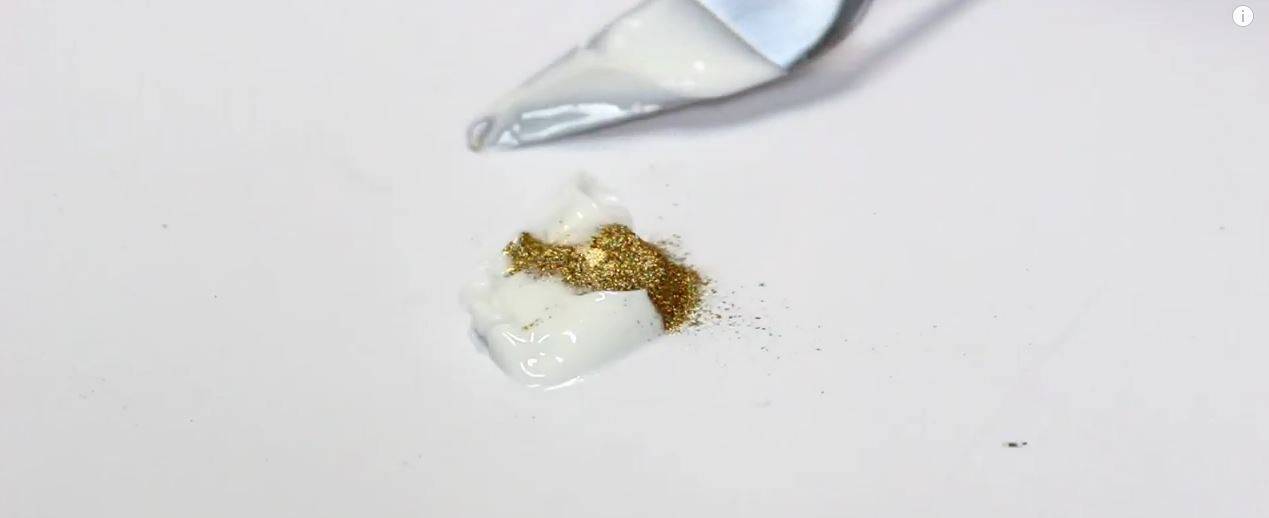




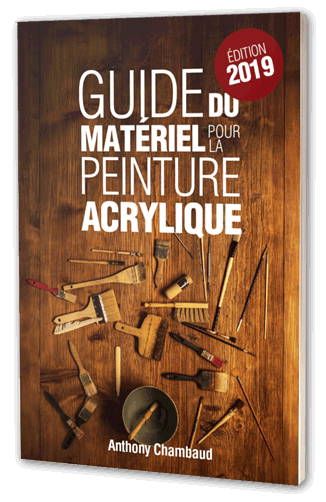


 Recevez votre Pack du peintre débutant
Recevez votre Pack du peintre débutant